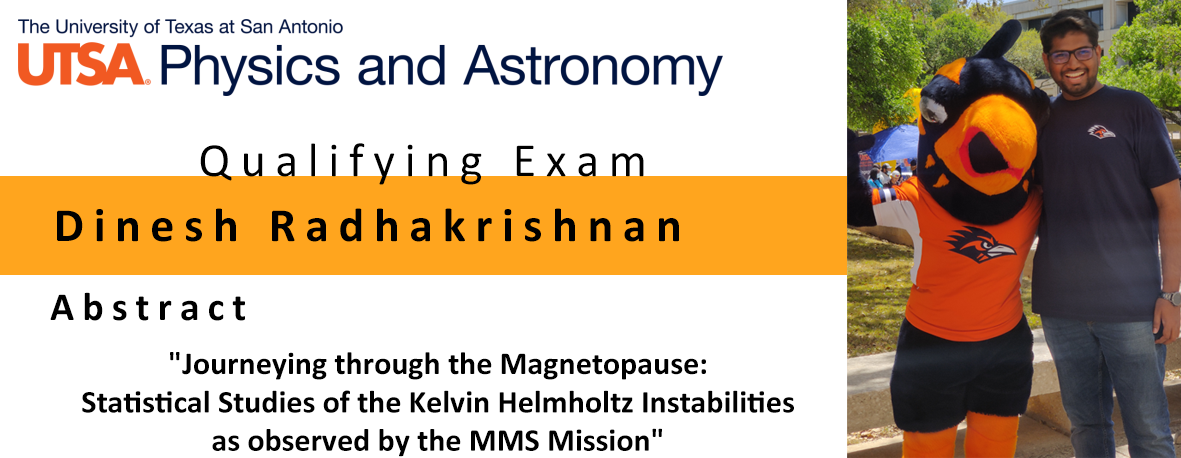
The overarching goal of this proposal is to understand what influences the development of Kelvin Helmholtz Instability (KHI) and the role KHI plays in facilitating the entry of solar wind into the magnetosphere. KHIs result from interactions between the shocked solar wind and the Earth’s magnetosphere. These are formed due to the velocity shear be-tween the plasma in the magnetosphere and magnetosheath. The role of KHI in bringing in the shocked solar wind has been studied extensively using MHD, Hall-MHD, hybrid and PIC simulations. Such simulations oftentimes make simplifying assumptions about the boundary layer at the magnetopause. To experimentally study the effects of KHI on the boundary layer and its effectiveness in bringing in solar wind and heating the ions in the magnetosphere, we need statistical studies. This goal is achieved by answering three science questions:
- What is the role of KHI in mixing magnetosheath and magnetospheric ions?
- What is the dominant ion heating mechanism within KHI?
- What is the effect of heavy ions on the development of KHI?
These science questions are answered by performing a statistical analysis of KHI de-velopment. We will analyze a minimum of 50 KHI events identified using data from the Magnetospheric Multiscale (MMS) mission. We use a variety of instruments and tech-niques to determine whether a KHI event is in its linear or non-linear state. These data are used to determine the composition within the KHI event, identify the origin of the ions within the event, and determine the velocity space distributions within the event. These observations determine the extent of the mixing, the dominant ion heating mechanism, and the influence of heavy ions on the growth of KHI. At the end of the three-year study, we will have developed a deeper understanding of the role of KHI in facilitating the entry of solar wind into the Earth’s magnetosphere. Though the proposed work is in the context of Earth’s magnetosphere, the results will provide insight into the efficiency of KHI in facil-itating the entry of solar wind in other planetary magnetospheres. This research is directly related to the science goals of the Magnetospheric Multiscale Mission.

